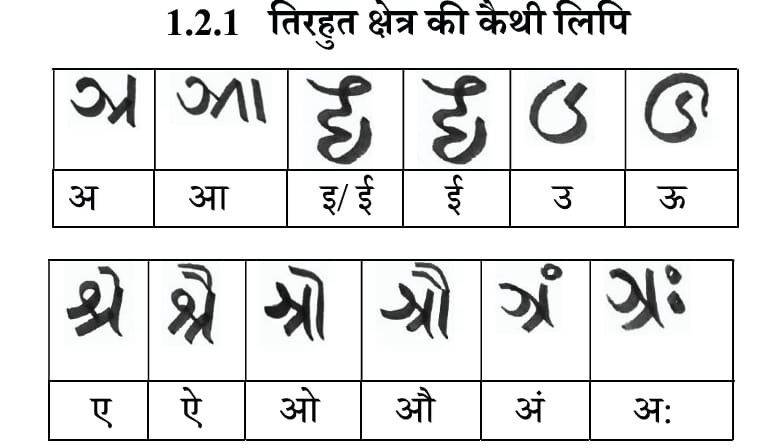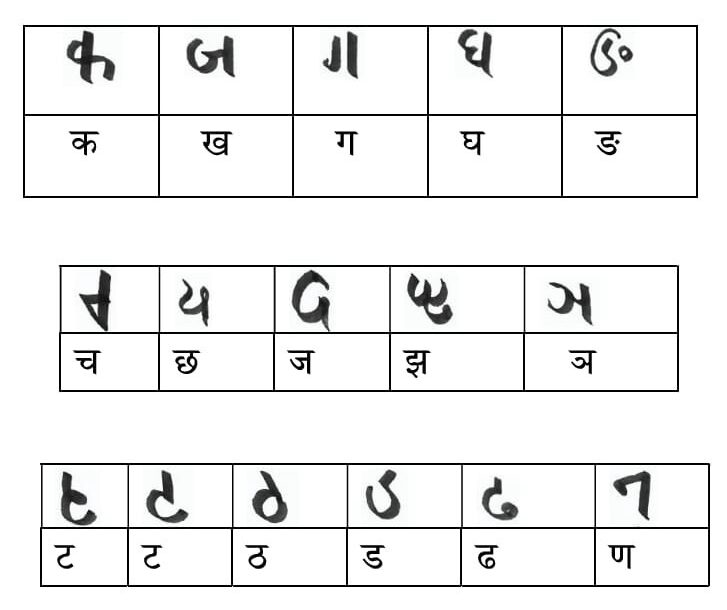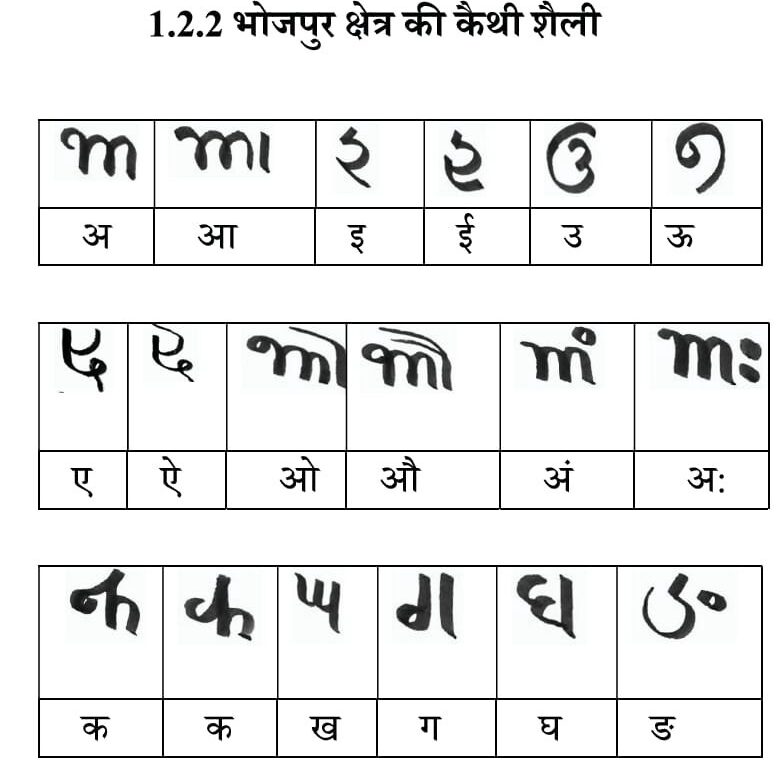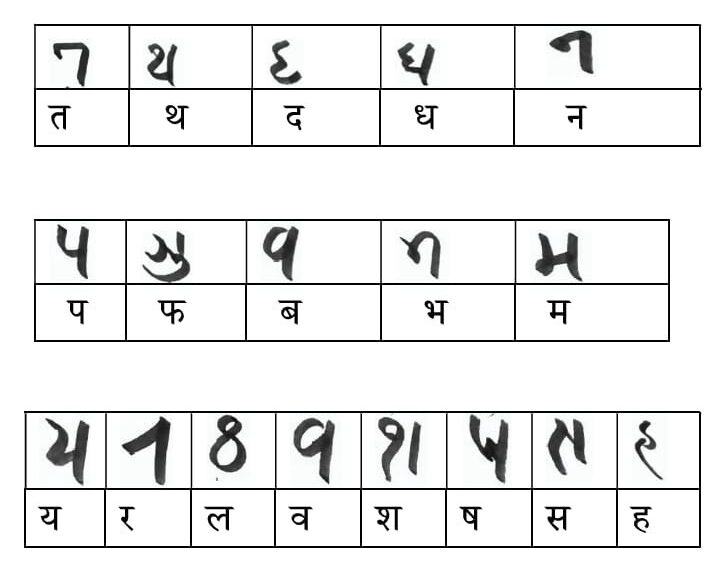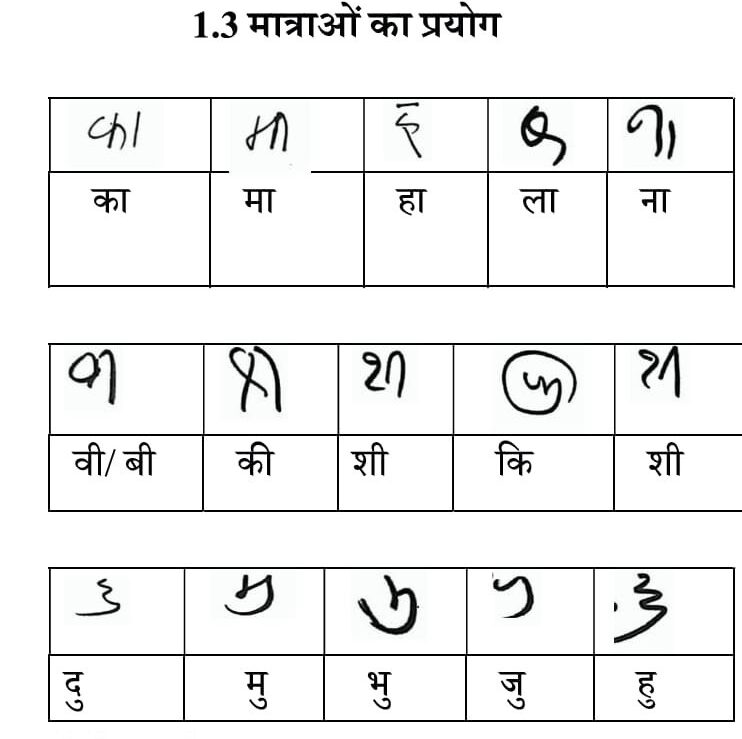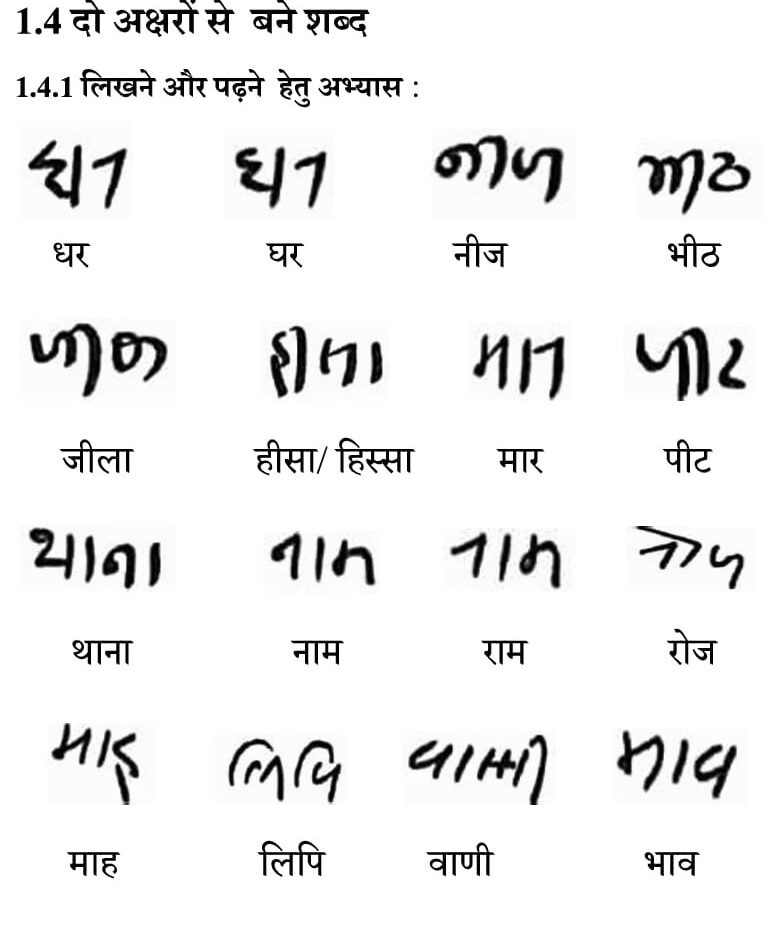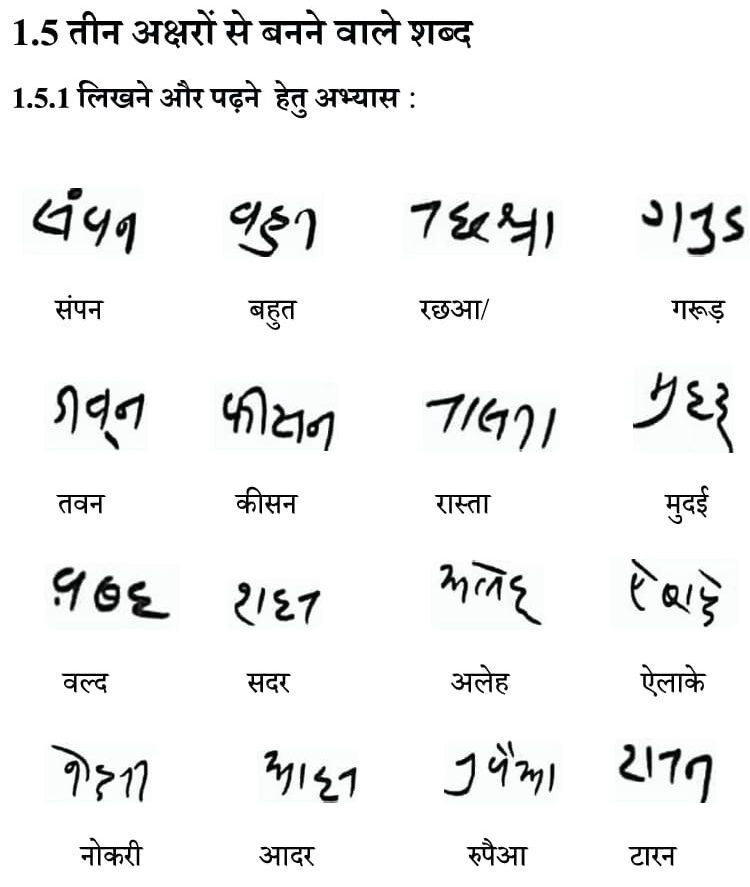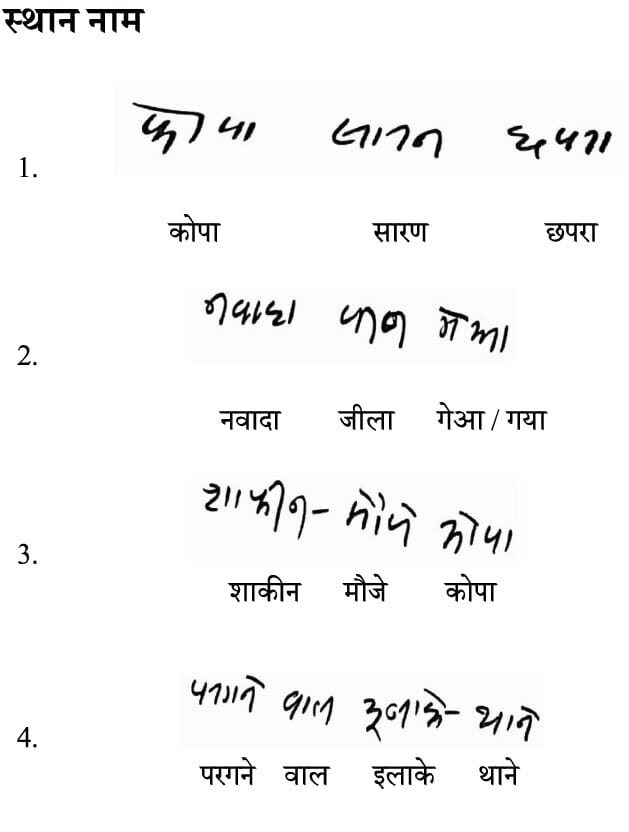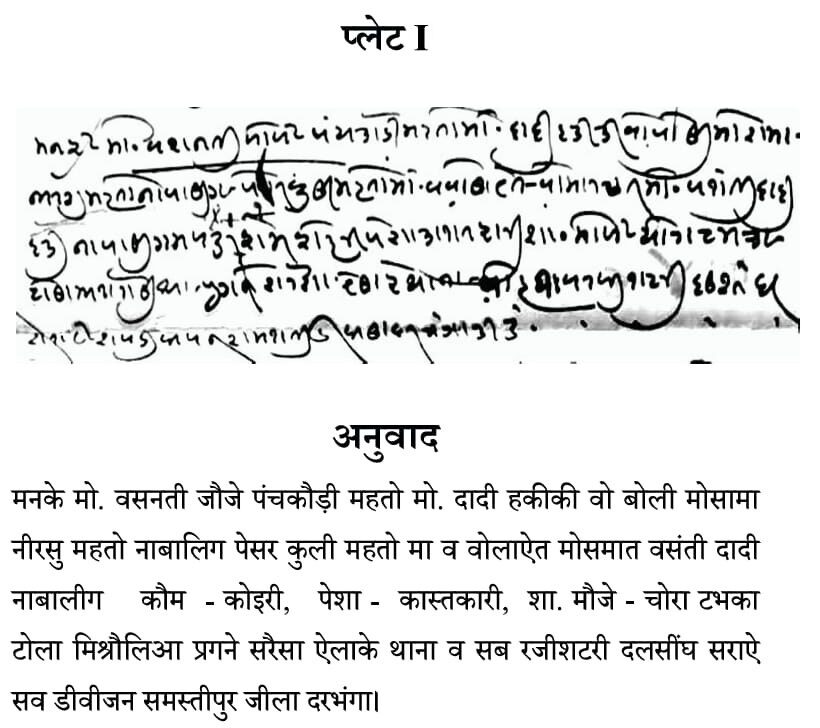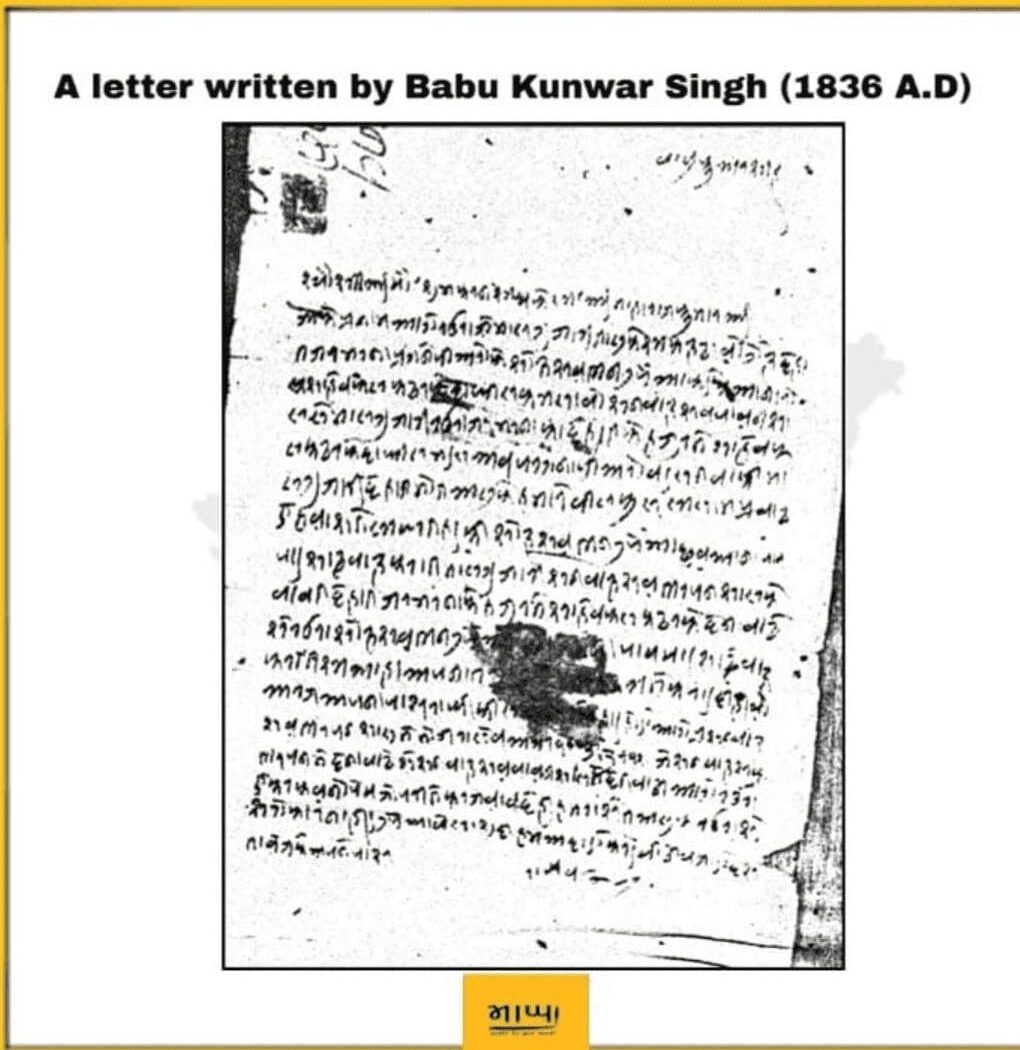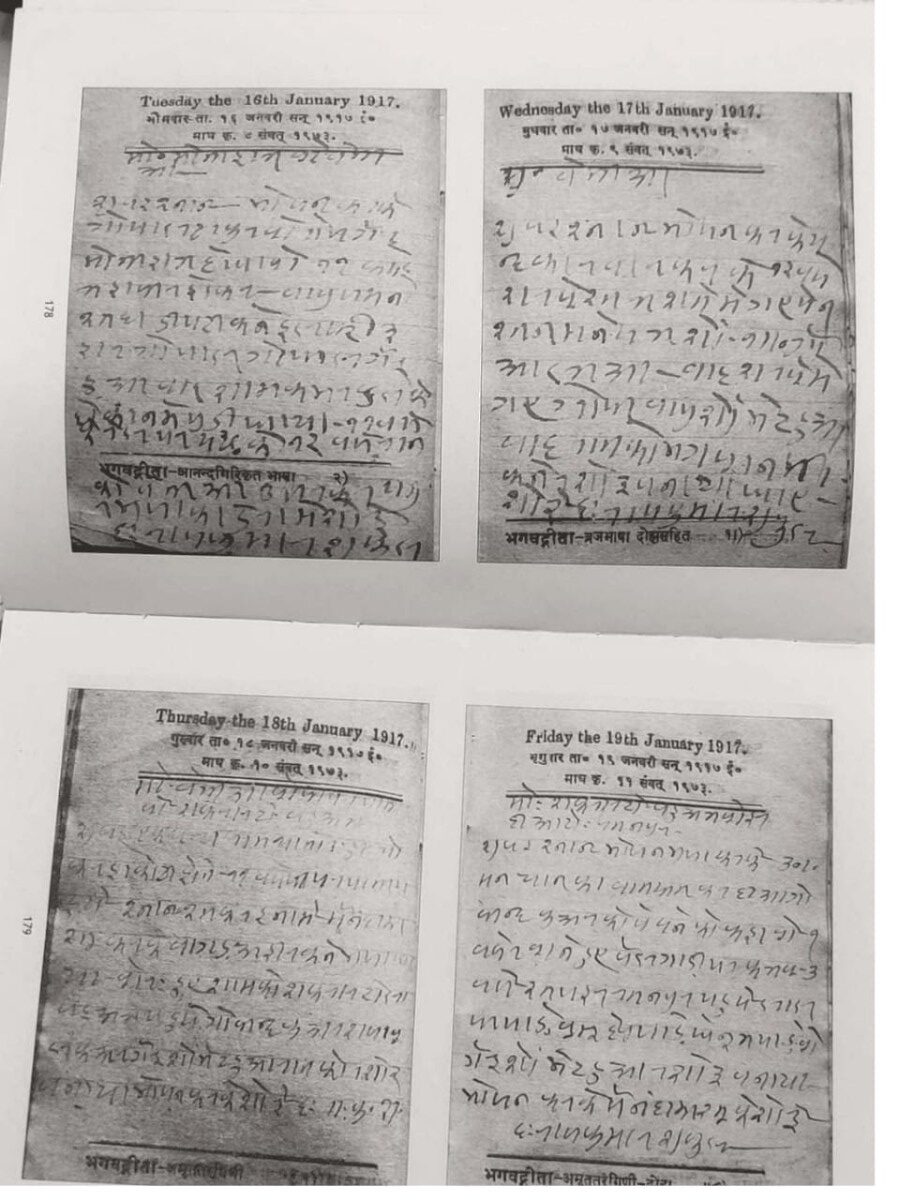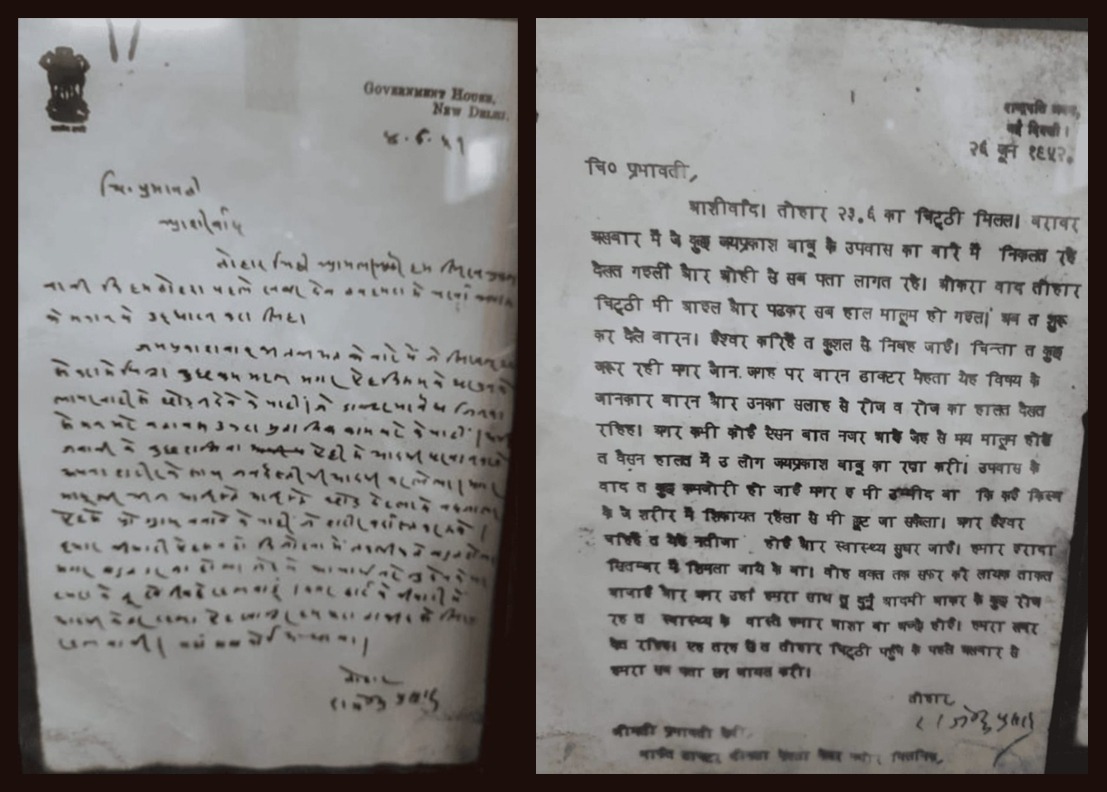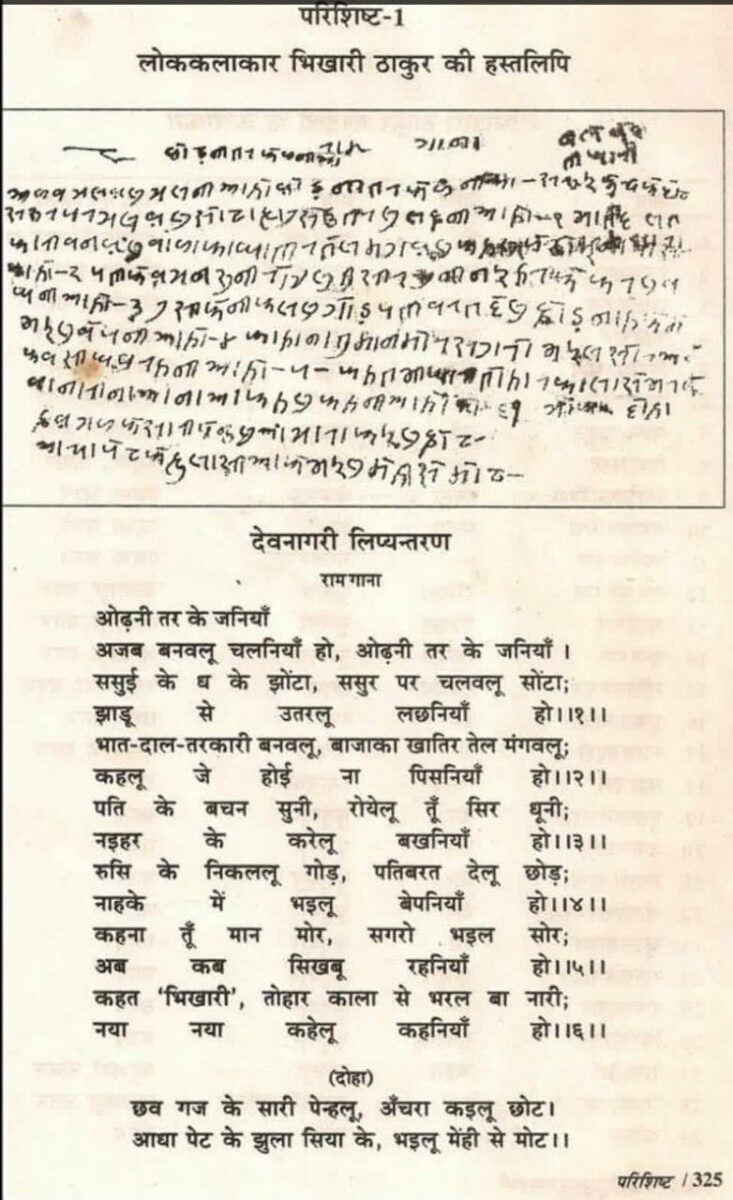
Kaithi – A script for commoners
Article By – Ayushi Kumari
Kaithi or Kaithili is a script which was extensively used in the regions of Bihar, Eastern Uttar Pradesh and West Bengal. Almost all the administrative work and day-to-day communication was done using Kaithi and despite the presence of Devanagari and Urdu as alternative scripts, Kaithi was the most prevalent one. However, this popularity went downhill after independence owing to a culmination of reasons, some of them being dwindling government support and widespread language movemnet. Through this article, the history of Kaithi as a script will be brought into the light explaining its uniqueness and what made it so popular among the masses.
History of Kaithi is traced right from the medieval period when localisation was at its peak. Whole North India was facing the wave of vernacularisation followed by the rise of a number of new social units, one of them being Kayasthas. Kayasthas referred to the court scribes whose job was to maintain all the royal records. Working with the King, they needed a script which could facilitate writing at a faster pace. Devanagari as a script has lots of consonants, vowels and compound consonants. Moreover, all the consonants in devanagari consist of a horizontal line, a perpendicular line along with the essential part of the letter. Thus, क is composed of — + | and then the mid part of the letter. Writing in a script which followed such a rigid pattern was tough for the scribe. They wanted something more free and fluent which could reduce their writing time frame. While writing Devanagari, the pen has to be lifted thrice, once for the horizontal line, once for the perpendicular line and at least once for the essential part of the letter. In short, Devanagari was not sufficiently cursive. There were two ways of giving it a cursive character, one of which was to preserve the framework, and alter the shape of the letter so that the whole could be written without lifting the pen from the paper. This was the course adopted in the Bengali and Oriya written hands. The other course was to discard as much as possible the horizontal and perpendicular lines, leaving only the essential part of the letter, and as much of them as could be combined with one stroke of the pen, without materially altering the shape of the original. This was the course adopted in the Modi, Gujarati, and Kaithi alphabets.
For a very long period of time, there was this perception that Kaithi is a corrupted version of Devanagari bur Irish linguist George Grierson in his book titled ‘A handbook to the Kaithi Character’, stated that Kaithi developed pari passu or parallel to Devanagari. With time, Kaithi got adopted as a running hand while devanagari got limited as an ornate writing style. Though Grierson’s viewpoint cannot be accepted as absolutely correct, this does open a new line of thinking about Kaithi not being derived from Devanagari.
Lots of differences can be traced between the devanagari and Kaithi script. Words in Kaithi are written without shirorekha or head line whereas in devanagari, a head line is irreplaceable. There are about 35 consonants and 10 vowels in Kaithi script and all the devanagari punctuation marks like halant, Viram chinha( comma), anuswar and anunasik are used in Kaithi. Grammatical errors are acceptable in Kaithi and not much focus is put on the use of Matras like ई or इ. Consonants or Vyanjan like ऋ, श्र,क्ष or ज्ञ are not used and the use of compound consonants is very rare. Maximum writers of Kaithi do not use स. Instead श is used everywhere. For example, रस्ता will be written as 𑂩श𑂞𑂰. As Kaithi was used by natives, separation of words while writing was not a practice and the whole responsibility of breaking the words to understand better was left to readers. However, when this script was used for administrative purposes in Government offices, it did follow a pattern of separating words to reduce chances of mistake.
Grierson divided Kaithi into three different types depending on the locality and the difference in the letter shape used in the script. Altogether, Three kinds of Kaithi have been identified- Tirhuti, which is said to be the most elegant, Bhojpuri (of Saran and Shahabad) which is said to be the most legible, and the Magah (of Patna and Gaya) which is a mean between the two. Illustrations of all these styles of writing can be found at the end of this article.
Within a short span of time, Kaithi emerged as a script of commoners. It was easy to learn and quick to write. With less emphasis on grammar, locals could use Kaithi everywhere without the fear of being judged. Gaining a stature like this, it was put to use in all forms of communication. Letters, folk songs, Scriptures, Property documents, School homework; Kaithi was everywhere. In 1880 CE, Sir Ashley Eden, Lieutenant governor of Bengal, issued an order making Kaithi the official script of Bihar mandating all the administrative work to be done in this script.Christopher King writes that the government intended the Nagari and Kaithi scripts to take the place of the Persian script in printed and hand-written documents respectively. After conferring official status upon Kaithi, the government initiated the creation of a font of Kaithi type, which was based on the improved and standardized Kaithi created in Oudh by Nesfield. By 1881, Standardized Kaithi began to be used in primary schools and courts of Bihar. Henry Beverly, the inspector General of Registration in Bengal, stated that Kaithi was extensively used for census operations in Bengal. Seeing the prevalence of Kaithi, missionaries and Bible societies turned to the Kaithi Script and started printing Bibles in the same way, extending their area of influence.
This enraged the devanagari supporters, especially Nagari Pracharni Sabhas that always believed in the superiority of Nagari and wanted only it to be the official script. Nagari supporters started criticising Kaithi explaining how it was not uniform and was apt only for informal conversations. All this protest prompted the government to revert its previous order ultimately making Devanagari the official script of Bihar in 1893. After Independence, Kaithi was removed as one of the official scripts of India marking all those who knew only Kaithi as illiterate. Raj kumar Shukla, the famous hero of Champaran Satyagraha, was also termed as an illiterate peasant in Louis Fischer’s book on Mahatma Gandhi but in reality, Shukla was well versed in Kaithi Script and religiously maintained a diary written in Kaithi. Bhikhari Thakur, the Shakespeare of Bihar, wrote all his nataks in Kaithi. The first president of India, Rajendra Prasad also used Kaithi for conversing in his daily life as is proved by his letters to his wife in the very script. All the Malguzari documents of Darbhanga Maharaj were also maintained in Kaithi. In fact, transliteration of Devanagari Ramayan into Kaithi Ramayan is also found.
Today the requirement of translating old property documents has created the need to know Kaithi and thus local training sessions are being conducted by the Bihar Government. With new Land survey programs announced in Bihar, Kaithi translations have taken a quick pace shifting the focus from translating court cases to translating property disputes.
”Earlier, Kaithi translations were needed only for court cases. But due to the survey, translations have increased a lot. I’m unable to meet the demand,” said Hari Prasad, one of the scribes in Samastipur, Bihar. With the spike in demand, the cost of translation has shot up from the previous charge of 200-300 rupees per page to 1000-2000 rupees per page today. Historian Bhairab Lal Das has been relentlessly working to promote Kaithi in Bihar. Multiple workshops have been conducted in different districts attracting students from all over india. Despite all this success, Das has expressed his disappointment about Kaithi being learnt only due to need and not because of interest. Das said, ”If people learn Kaithi only to read land documents, then it will be injustice to this script. Take any step into history, and you will find Kaithi there.”
Though the government initiative and labour of some individuals have brought Kaithi back into the public light, it is still very distant from its earlier crowned position. Kaithi’s popularity was once unbeatable and today it is even rare to find people who know how to read or write in this script. There are youtube channels teaching this script, but an extensive program needs to be launched to make Kaithi more accessible to everyone. Like language courses, Script courses should be launched so that people can read what exactly their Great Grandparents wrote in their now left diaries. There are lots of examples of people who started learning Kaithi so that they can either read their grandmother’s folk songs or know what was left for them by their ancestors. Nevertheless, whatever the reason be, Kaithi as a script needs a revival today and that will not be possible unless people themselves start understanding the relevance of this script. After all, language and scripts cannot survive without the support of masses and currently Kaithi needs this understanding the most.
Reference-
1.A handbook to Kaithi Character by George Grierson
2.https://www.iosrjournals.org/iosr-jhss/papers/Vol.28-Issue8/Ser-4/D2808042526.pdf
3.https://www.unicode.org/L2/L2008/08194-n3389-kaithi.pdf
4.https://archive.org/download/languageandlinguisticsseriesr.pischelagrammaroftheprakritlangu
agesmotilalbanarsidass1981/Wikipedia-Kaithi.pdf
5.https://youtu.be/FUWL9I7c4Uc?si=3ENBwO1g2X8O1RP-
6.https://youtu.be/o-0Qus_54sU?si=XlLXo1ilcji4mJJ3
7.https://youtu.be/9v-5vFu48DY?si=Qar1fOOscV0Kiy0N
